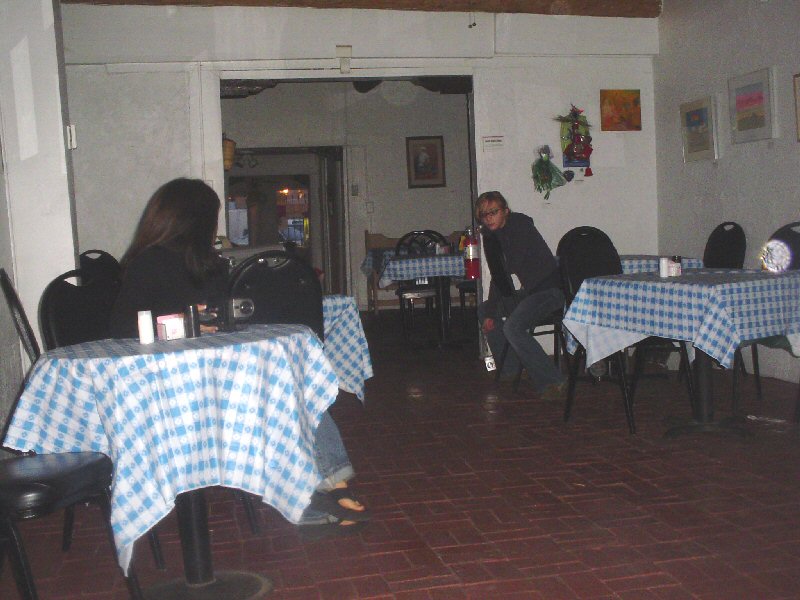The front room of this building was constructed prior to 1706 as a Native American residence. Made of adobe bricks which are mortared with mud then protected with a layer of mud or cement, much of the original walls remain. The original vigas (wooden beams) are still visible in the ceiling. Efficiently styled fireplaces, called “kivas” were the prime source of heat.
In 1680, the northern Pueblo Indians revolted against the oppression of Spanish rule, forcing the Spaniards, many of the colonists and even the southern Pueblo Indians to flee New Mexico. Most fled to the south along El Camino Real, and relocated along the lower Rio Grande around present day El Paso, Texas.
The Spanish eventually returned and constructed a small presidio (fort) just north of a small settlement that would eventually become the city of Albuquerque. The back of the building was where their horse coral was located. This has since been built over and is now the main room of the building where bands play to the establishment’s clientele. Properties on both sides of Carnuel Street were first owned by the Diego Sanchez family in 1690. The street was eventually renamed Charlevoix Street after another owner of the land, Charles, a French man who operated a stable and Old Town’s weigh station. Charlevoix is French for “Charles’ view”. Charlevoix Street was also nicknamed Burro Alley due to the laws that prohibited them in the plaza. In modern times the building has served as a restaurant, various mercantile shops, a bicycle shop and now a coffee shop.
It is also interesting to note that the coffee house is only one small part of the ancient Spanish fort. The fort extended east to San Felipe Street and then turned south. Other shops within this area have also reported unusual occurrences that are similar in nature to those that occurring at this location. However, the locations on San Felipe Street seem to be more consistently active than the Coffee house itself. This may be due to the location of living quarters and defensive positions when the area was a Spanish fort. It should also be noted that a great deal of the original Spanish fort was destroyed in the flood of 1866.
